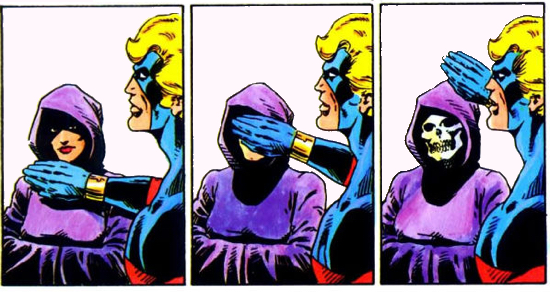Martha Thomases: Selling Death
About 20 years ago, I asked Batman editor Denny O’Neil if I could attend DC’s annual editorial retreat. I was their Publicity Manager at the time and I thought that if I could sit down and watch how the creative teams worked I could better promote the various Batman titles.
Denny was cool with it, and my boss was cool with it, so I went up to Tarrytown NY with them. It was a really interesting experience… for about a day. Then, for some reason, the big boss found out I was there and demanded I return.
His fears, as I understand them, were that, as part of the marketing department, I might interfere with the creative and editorial decisions. That was certainly not my intention. And it was also pretty insulting to Denny, to Alan Grant and Jo Duffy and Chuck Dixon and the others who were there who were more than willing to tell me to shut up if I overstepped my bounds.
Things have certainly changed since then.
Earlier this week, the New York Daily News ran a story by Ethan Sacks about the Marvel editorial summit. In attendance were Joe Quesada, Axel Alonso, James Robinson, Ta-Nehisi Coates, Brian Michael Bendis, Emily Shaw, Sana Amanat, Nick Spencer, Sam Humphries, G. Willow Wilson, Dan Slott, Tom Brevoort, Dan Buckley, and probably a whole bunch more.
This is amazing. I can’t think of any other kinds of story meetings that involve the press. Did Matthew Weiner let reporters into the Mad Men writers’ room? Did Jann Wenner send someone to sit in with Lennon and McCartney?
The article did not say if any marketing people were there while they planned the next storylines which will, apparently, involve the death of a major character. According to the piece, this is something that Marvel plans to happen every quarter. Dan Buckley is quoted as saying “The death is a marketing hook,” although he goes on to say that the story has to pay off. Still, it seems pretty damning to me, and indicative of a thought process that seeks out the lowest common denominator.
To my mind, they did this backwards. They decide that some character has to die, and then try to figure out who it should be, and from there, what the story is. I think they should first have a story, see which characters make sense to be part of that story, then see if one of them dies in the course of events. I’m on record saying that I think death is over-used as a plot device. We know the character isn’t really dead. By going to that story-well four times a year, Marvel runs the risk of cheapening the death of heroes. It’s not special. It does not inspire awe for a hero’s self-sacrifice, or tears for the tragedy.
We know the character will come back to life in a few months or years. Hell, if there must be destruction, blow up an entire planet.
A wedding would be more engaging. A birth.
It’s encouraging to see that there were more kinds of people in the room than the usual white men. Some were even women. It is my hope that this is a trend that will continue and grow. That’s how you get new perspectives on the stories, and new ideas. Perhaps if Marvel invites a reporter to the next summit, they’ll permit the women to speak to the press, just like the boys do.












